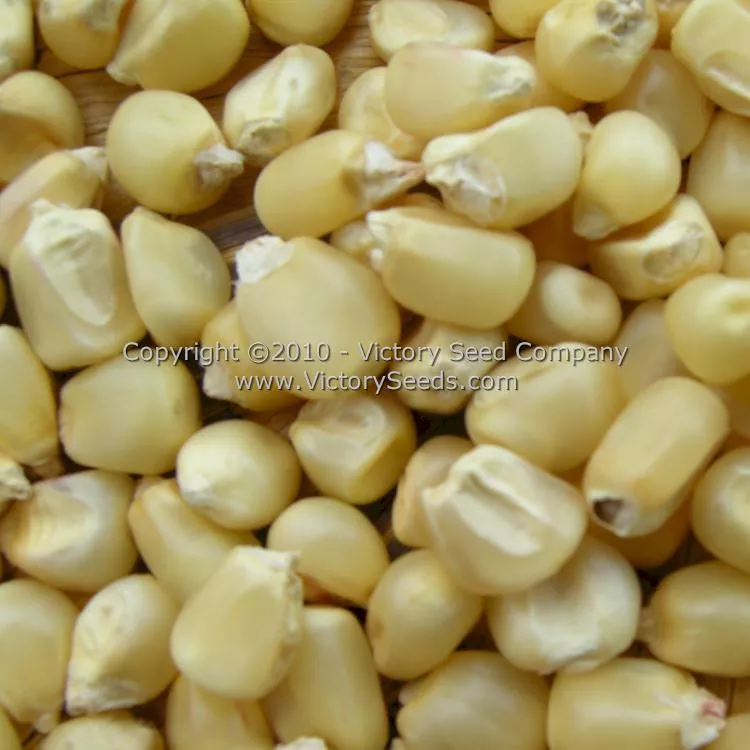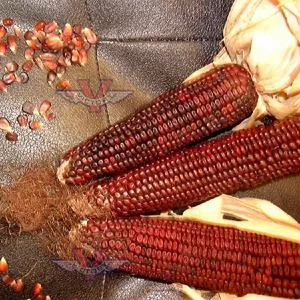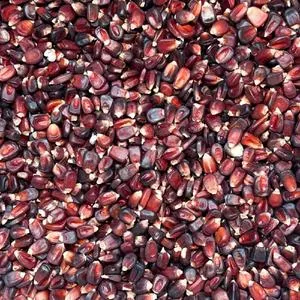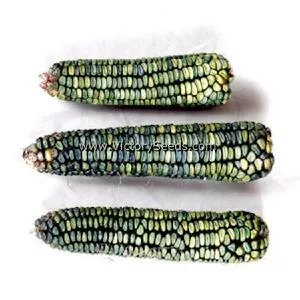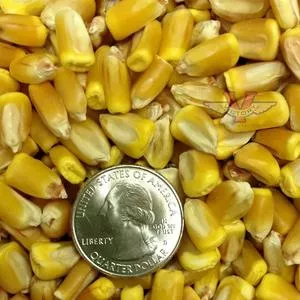Silvermine White Dent Corn
Zea mays subsp. mays
Price: $3.34
SKU: 31402411Choose a variant:
112 days - 'Silvermine' is an old dent variety that was once commonly grown throughout the Corn Belt of the United States. It is a little earlier than 'Boone County White', with somewhat smaller ears but usually deeper grains.[1] The ears grow about nine inches long and have fourteen to sixteen rows of large, white kernels. 'Silvermine' can be used as a roasting corn variety, and is also excellent for grits, meal, and animal feed.
Its history is a bit confusing as there are several similar varietal names (i.e. 'Iowa Silver Mine' and 'Silver Mine'). To further complicate matters, after it was originally released to the public (circa 1890), it became popular and further breeding work commenced. This resulted in an increasing number of strains with the same name. In 1903, the Kansas Agricultural Experiment Station obtained commercial samples from several seed companies - Funk Bros., Iowa Seed Company, and Barteldes Seed Company - and started breeding work. They subsequently sold their strain to a Mr. Ernest W. Young of Lawrence, Kansas in 1907 for further refinement and release.[2]
Special Groups: Market Growers
Genetic Classification: Open Pollinated
Genetic Classification: Open Pollinated
Planting Instructions:
Soil must be at least 65ºF to germinate. Be patient and do not plant too early or you will waste a lot of seed! Plant in full sun and keep it watered. Corn is a wind-pollinated plant. Plant in blocks several rows wide to ensure full ears.
Sow seeds about 1½ to 2½ inch deep, 3 to 4 inches apart, in rows spaced 24 to 30 inches apart. Thin to 6 to 12 inches apart.
Harvest Information:
Pick the ears for dry grain or decoration when the husks are dry and the kernels are hard enough that you cannot make a dent in them with your fingernail. Many people pick the ears too early when kernels are still soft. If this is done they shrivel up and shrink and their beauty is destroyed. They cannot finish maturing once they have been picked.
Even though the ears look dry, there remains moisture deep within the cob. If you were to enclose them in a box, the moisture would cause them to sour and mold. You may let them dry longer on the plants if neither weather nor predators are damaging them. Otherwise hang them up or lay them out in the open until they are completely dry inside.
Sow seeds about 1½ to 2½ inch deep, 3 to 4 inches apart, in rows spaced 24 to 30 inches apart. Thin to 6 to 12 inches apart.
Harvest Information:
Pick the ears for dry grain or decoration when the husks are dry and the kernels are hard enough that you cannot make a dent in them with your fingernail. Many people pick the ears too early when kernels are still soft. If this is done they shrivel up and shrink and their beauty is destroyed. They cannot finish maturing once they have been picked.
Even though the ears look dry, there remains moisture deep within the cob. If you were to enclose them in a box, the moisture would cause them to sour and mold. You may let them dry longer on the plants if neither weather nor predators are damaging them. Otherwise hang them up or lay them out in the open until they are completely dry inside.
Informational References:
- "Variety Tests," Kansas State Agricultural Extension, Circular 6, 1910.
- "Indian Corn," Kansas State Agricultural Extension, Bulletin No. 147, June, 1907.
Customer Reviews:
Do you have experience with this one? 📝 📣 Write a review!
No reviews have been posted yet.

